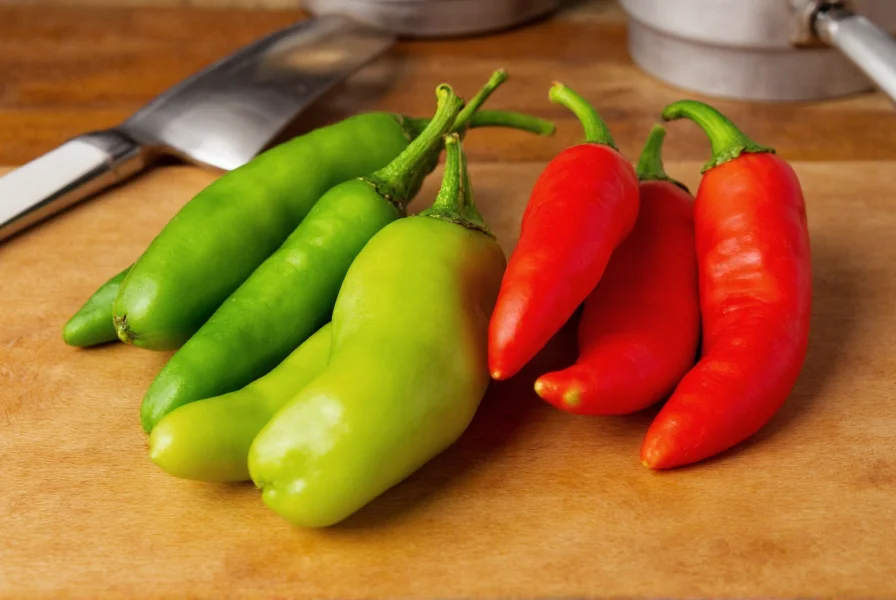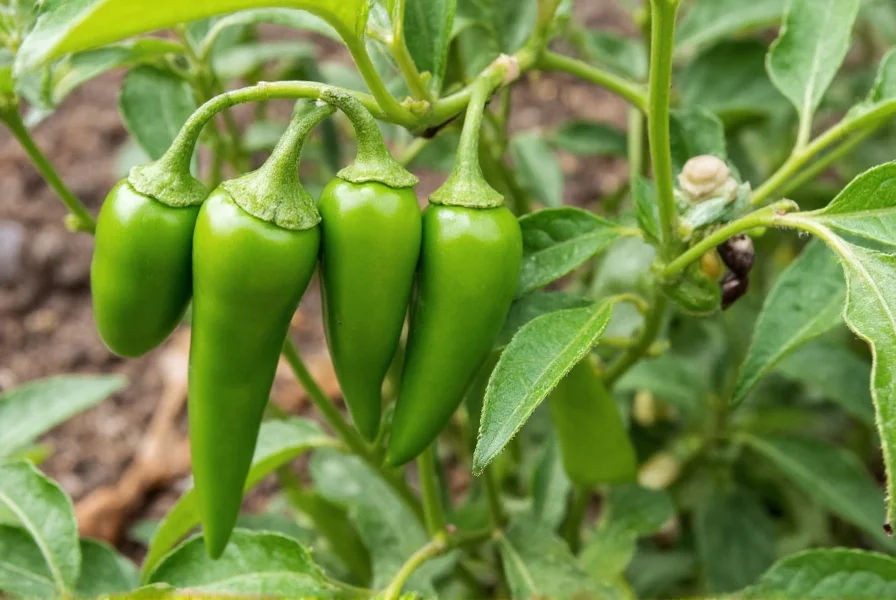The Sargento pepper (Pimenta Sargento) is a medium-heat Brazilian chili variety native to Minas Gerais, measuring 10,000-25,000 Scoville Heat Units with a distinctive fruity flavor and earthy notes commonly used in traditional Brazilian cuisine. This tapered pepper transitions from vibrant green to deep red when fully ripe and serves as a versatile ingredient in Brazilian cooking, particularly in Minas Gerais regional dishes.
Understanding the unique characteristics of the Sargento pepper helps home cooks and culinary enthusiasts incorporate this flavorful ingredient into their cooking. Unlike more widely known varieties, the Sargento pepper maintains a balanced heat profile that enhances dishes without overwhelming other flavors—a quality that has made it a staple in Brazilian kitchens for generations.
Origin and Historical Background
The Sargento pepper traces its roots to the southeastern Brazilian state of Minas Gerais, where it has been cultivated for centuries. The name "Sargento" (which translates to "sergeant" in Portuguese) likely references the pepper's disciplined appearance—neatly tapered and consistently shaped, resembling the precise uniform of a military officer. Local farmers in Minas Gerais have traditionally grown this variety in small-scale agricultural operations, passing down cultivation techniques through generations.
Unlike commercially dominant peppers that have been selectively bred for mass production, the Sargento pepper has maintained its traditional characteristics. This preservation of heritage makes it particularly valuable for culinary anthropologists studying regional Brazilian foodways and for chefs seeking authentic ingredients for traditional recipes.
Physical Characteristics and Identification
Sargento peppers typically measure 2-3 inches in length with a distinctive tapered shape that narrows to a pointed tip. When immature, they display a bright green color that gradually transforms through yellow and orange stages before reaching their final deep red maturity. The skin has a smooth, glossy texture with thin walls that make them suitable for both fresh use and preservation.
| Characteristic | Description |
|---|---|
| Size | 2-3 inches long, 0.5 inches wide at shoulder |
| Shape | Tapered with distinctive pointed tip |
| Maturity Color Progression | Green → Yellow → Orange → Deep Red |
| Wall Thickness | Thin (ideal for pickling and sauces) |
Heat Level and Flavor Profile
With a Scoville rating between 10,000-25,000 units, the Sargento pepper occupies the medium-heat category—comparable to cayenne but milder than habaneros. What distinguishes it from other peppers in this heat range is its complex flavor profile that combines bright fruitiness with subtle earthy undertones. When sampled raw, you'll first notice a citrus-like brightness followed by a gentle warmth that builds gradually rather than delivering an immediate punch.
Chefs particularly value the Sargento pepper's flavor balance, which allows it to enhance rather than dominate dishes. Unlike some hotter varieties where the heat overshadows other flavors, the Sargento pepper's moderate spiciness works harmoniously with complementary ingredients. This characteristic makes it exceptionally versatile for both traditional Brazilian preparations and contemporary fusion cuisine.

Culinary Applications and Traditional Uses
In Brazilian cuisine, particularly in Minas Gerais, the Sargento pepper appears in numerous traditional preparations. Locals often incorporate it into molho campeiro (a rustic table sauce served with meals), feijão tropeiro (a regional bean dish), and various meat marinades. The pepper's thin walls make it ideal for pickling, and many Brazilian households maintain jars of pimentas em conserva (pickled peppers) to have on hand throughout the year.
When cooking with Sargento peppers, consider these professional techniques:
- For fresh applications, remove seeds and membranes to moderate heat while preserving flavor
- Add toward the end of cooking to preserve bright flavor notes
- Pair with dairy products like Minas cheese to balance heat
- Combine with citrus elements to enhance natural fruitiness
- Use in vinegar-based hot sauces where its flavor profile shines
Growing Sargento Peppers
While primarily associated with Brazilian agriculture, Sargento peppers can be cultivated in similar climate zones worldwide. They thrive in warm temperatures between 70-85°F (21-29°C) with consistent moisture and well-draining soil. Gardeners report best results when starting seeds indoors 8-10 weeks before the last frost date, then transplanting to full sun locations after soil warms.
The plants typically reach 24-36 inches in height with moderate branching. Harvest begins approximately 70-80 days after transplanting, with peppers maturing from green to red over a 2-3 week period. For optimal flavor development, many growers recommend harvesting when peppers show the first blush of color rather than waiting for full red maturity.
Availability and Substitution Options
Finding fresh Sargento peppers outside Brazil can prove challenging, though specialty Latin American markets in larger cities sometimes carry them seasonally. When unavailable, suitable substitutes include:
- Fresno peppers (similar heat level and flavor profile)
- Red jalapeños (slightly milder but comparable flavor)
- Malagueta peppers (closer Brazilian relative with similar heat)
- Serrano peppers (hotter option requiring reduced quantity)
For authentic Brazilian recipes calling specifically for Sargento peppers, consider growing your own from seeds available through specialty chili growers. The plants adapt well to container gardening, making them accessible even for urban gardeners with limited space.

Preservation Techniques
Brazilian home cooks employ several traditional methods to preserve Sargento peppers for year-round use:
- Quick Pickling: Combine sliced peppers with vinegar, garlic, and spices for refrigerator pickles ready in 24 hours
- Drying: String peppers and air-dry in a warm, well-ventilated space; reconstitute in hot water when needed
- Freezing: Blanch whole peppers briefly before freezing to maintain texture
- Oil Preservation: Submerge roasted peppers in olive oil with herbs for flavorful infusions
Each preservation method affects the pepper's flavor profile differently, allowing cooks to select the technique that best serves their intended culinary application. Pickled peppers develop brighter acidity, while dried versions concentrate the earthy notes.
Frequently Asked Questions
How does the Sargento pepper compare to jalapeños in heat level?
The Sargento pepper typically ranges from 10,000-25,000 Scoville units, making it moderately hotter than jalapeños (2,500-8,000 SHU) but significantly milder than habaneros (100,000-350,000 SHU). While jalapeños deliver a more immediate heat sensation, the Sargento pepper's warmth builds gradually with more complex flavor notes.
Can I grow Sargento peppers in a container?
Yes, Sargento peppers grow well in containers of at least 5 gallons with proper drainage. Use a high-quality potting mix with added perlite for aeration, and place the container in a location receiving 6-8 hours of direct sunlight daily. Container-grown plants require more frequent watering but adapt well to controlled environments.
What traditional Brazilian dishes feature Sargento peppers prominently?
Sargento peppers appear in several Minas Gerais specialties including molho campeiro (a fresh table sauce), feijão tropeiro (a regional bean dish with pork), and various meat marinades. They're also commonly pickled and served alongside traditional dishes like pão de queijo (cheese bread) and tutu de feijão (mashed bean stew).
When is the best time to harvest Sargento peppers for optimal flavor?
For balanced flavor, harvest Sargento peppers when they show the first blush of color (yellow/orange stage) rather than waiting for full red maturity. This intermediate stage offers the ideal combination of developing sweetness and moderate heat. Fully ripe red peppers provide maximum heat and deeper flavor complexity for specific applications.
How should I handle Sargento peppers to avoid skin irritation?
Always wear gloves when handling Sargento peppers, especially when cutting or seeding. The capsaicin oils can transfer to skin and cause irritation, particularly if you touch your face or eyes. Work in a well-ventilated area, and wash all surfaces and utensils thoroughly after preparation. If irritation occurs, apply milk or yogurt to affected areas to neutralize the capsaicin.










 浙公网安备
33010002000092号
浙公网安备
33010002000092号 浙B2-20120091-4
浙B2-20120091-4